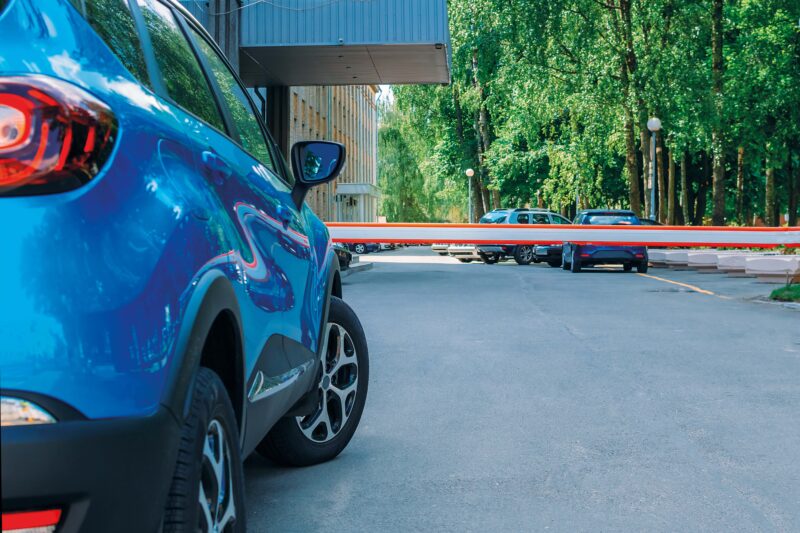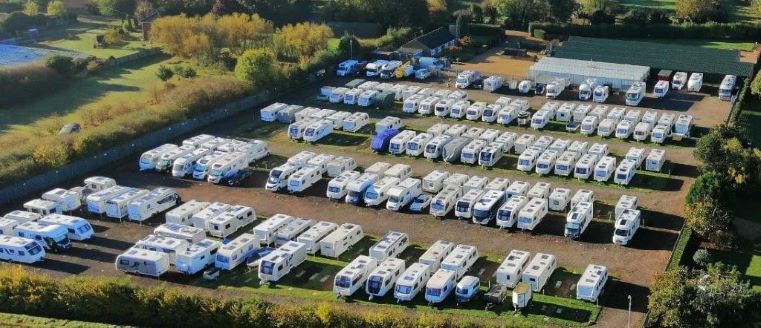Vehicle access control is an increasingly important part of any security design. In addition to the security aspect, security managers recognize the importance of a convenient user experience and an optimal traffic flow. The choice for a vehicle access control solution within this design depends on personal wishes, needs and various aspects like the gate layout and user groups. In this article, Nedap highlights typical vehicle access applications. What characteristics does such an environment have and which technology offers a suitable solution for Security Managers within their security design?
Important factors for typical vehicle access applications
Even though every organization has unique different wishes and needs, there are typical elements that describe vehicle access situations in general. Those situations occur frequently in different environments and are characterized by the following aspects:
- Security level
Nowadays it is self-evident that the passage from a public area to a private environment is not accessible for everyone. Employees, visitors and valuable goods are protected on a site when making the property only accessible to authorized drivers. But which security level is desirable for the environment and which technology meets these requirements? For example, at airports the highest security level is often desired in which the combination of a vehicle and driver needs to be identified. While different requirements apply for example for office buildings, where identifying only vehicles is sufficient. - Traffic volume
Looking at traffic volume, it is important to see whether there is a continuous flow throughout the day or whether on arrival and departure. Think of universities or office buildings where employees and students are mainly entering between 8 and 9. As a result, an optimal flow with as few manual actions to gain access is significant. This aspect is important in the choice of technology and the type of identifier that is needed.
Vehicle identification solution indicators
In addition to the fact that the previously mentioned characteristics are key indicators for common vehicle access applications, there are other criteria that should be taken into account when choosing a solid vehicle access solution.
- Gate layout
80 percent of all gate access control situations are broadly similar, looking at the gate layout. Often there is one single lane available for in- and outgoing traffic, or two separate lanes for separating incoming and outgoing traffic. For these entrances and exits with typical dimensions a 7 meter read range is often sufficient for an optimal traffic flow in which drivers do not have to stop before entry. - User groups
In every security design the type of users is a key indicator for the solution choice in regard to both building as perimeter access. Within these typical vehicle applications like staff parkings or campuses, both employees and (registered) visitors are most common users.
Just as important is the type of vehicles used. In most vehicle access cases, a homogenous fleet of vehicles is used. This is mainly about passenger cars and motorcycles. The minimum of 7 meter long read range would be sufficient to read both types of conveniently.
Long-range vehicle identification based on UHF technology
Based on the above mentioned indicators, a proper solution can be recommended. The choice of solution entails the choice of technology, the type of reader and identifier. Nedap Identification Systems has a broad portfolio with solutions for vehicle (and driver) identification.
When it comes to typical vehicle access applications, most recommendations opt for an UHF solution. Within the vehicle identification area, UHF has a strong position because of the possibilities of reading vehicles on several meters using cost effective passive identifiers (without batteries).

Nedap’s passive UHF reader uPASS Reach
For most vehicle access applications, Nedap has developed the uPASS Reach, a UHF RFID reader for long-range vehicle identification. Based on passive UHF technology (± 900 MHz), vehicles are identified up to 7 meters (23 feet). Based on the following key elements, the uPASS Reach is extremely suitable because:
- The reader identifies vehicles on a long-range distance, which ensures an optimal flow of vehicles. Users experience ease when entering and exiting the perimeter.
- The reader has an adjustable read range. This means that the reader can focus very specifically on 1 vehicle in 1 lane, and therefore the accuracy of the reading performance is optimal.
- The uPASS Reach UHF RFID reader supports OSDP for automatic vehicle identification applications. OSDP V2 enables advanced and secure communication between the uPASS UHF RFID reader and the controller.
- The uPASS Reach supports a variety of legacy industry-standard communication interfaces, such as Wiegand, clock & data and serial connections like RS232 and RS422. This enables seamless integration into any existing or new access control or parking system.
- Based on battery-free passive UHF, the uPASS Reach is a cost effective solution for long-range vehicle identification situations.
uPASS identifiers based on passive UHF technology
The choice of the identifier is also an important factor. Nedap offers a broad portfolio of passive UHF tags that, in combination with the uPASS Reach reader, offers a cost-effective solution for typical vehicle access applications. The various tags can be identified up to a long range.
While most tags support only UHF technology, Nedap stands out with its UHF combi card. The UHF Combi Card is featured with long-range UHF and proximity or smart card technology. The use of this one single card ensures both vehicle and building access applications in one identifier.
Cost-effective choice for typical vehicle access applications
This uPASS solution is an excellent choice for 80 percent of vehicle access situations where there is a need for security, an optimal traffic flow and user convenience. Nedap has over 30 years of experience in providing suitable vehicle identification solutions that connect seamlessly with any existing building access solutions. All Nedap’s long-range readers can be easily integrated into any access control platform.
Contact us
Are you curious about the uPASS reader or are you looking for advice on vehicle identification? Take a look at our solution page or contact us.


